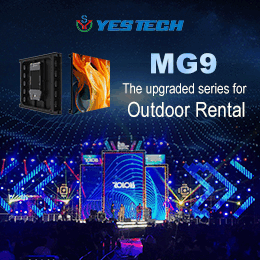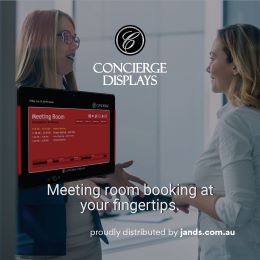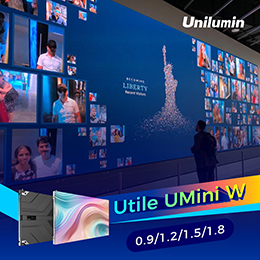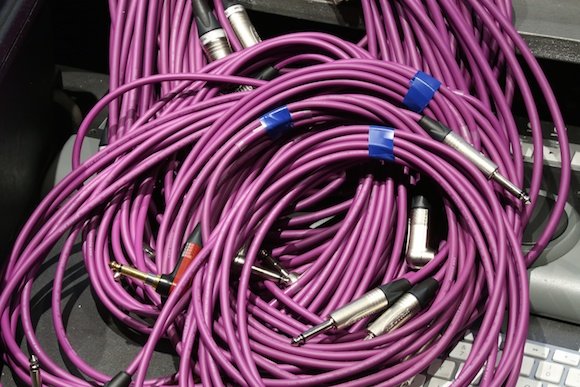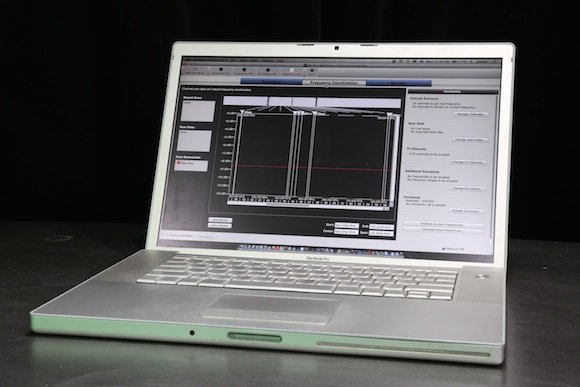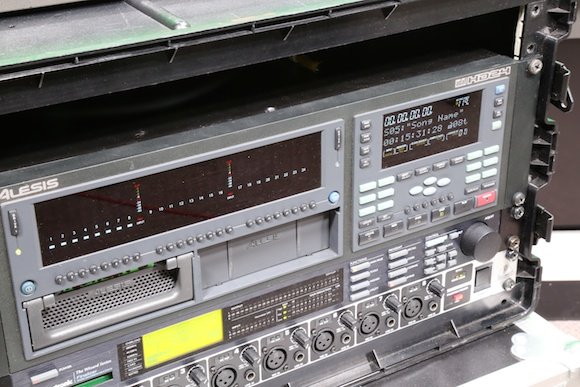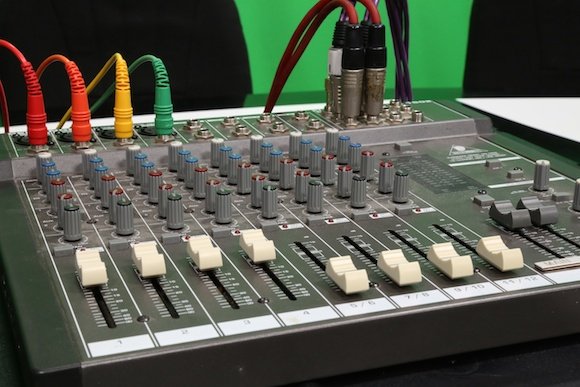News
21 Sep 2015

My Favourite bits of kit
Subscribe to CX E-News
As some of you may know, I freelance as an audio guy in a number of different fields. Not surprisingly I’ve bought a bit of equipment over the years to further this pursuit. Looking back at the choices I’ve made, it’s funny the things in which I choose to invest. Some of them were poor choices, but thankfully most were good ones. I thought since it’s been about 20 years since I bought my first piece of real audio gear, now might be an interesting time to reflect on some of the gear choices I’ve made, and what I’ve learnt from those choices.

The first piece of pro audio gear i ever purchased was a Behringer MX1602 mixing console. Behringer was in its infancy back then, and from memory this little console with four mic inputs and four stereos cost around the $500 mark. These days you get more console for your money, still, it’s been a useful little tool over the years, and aside from needing to replace one cap in the power supply it’s been very reliable. I still use it for monitoring multi- track records when we shoot “The Hump” here at CX HQ.
I bought an Alesis HD24 recorder second hand out of the US – I paid a bit over a grand at the time, and the shipping cost me half that much again. It was totally worth it though, because the HD24 is a great box. I liked it so much that I later bought a second unit and kitted up to do 48 channel multitrack records. The 48 channel system was relatively short lived, but I did get to record Gary Numan with it, so that was cool. The HD24 is rock solid and it sounds good. The biggest problem is that occasionally when you hit it with too much vibration (ie; really high SPL) it drops out of record – that and extracting the files from the drive caddies is a bit painful. I subsequently replaced the Alesis kit with a Roland V-Mixer, digital snake and recorder.
I was an early adopter of the Roland system – I think I had one of the first M-480 mixers and R-1000 recorders in the country. The retained value of the system now is basically zero, but that doesn’t matter since I’ve had it for several years and the entire kit paid for itself in the first six months I owned it. It’s done some pretty respectable gigs too, including mixing a few orchestras and recording Alice Cooper and Icehouse. Regardless of its low retained worth, I’m going to chalk this one up as a good investment. Also worth noting is at the time this gear was released, literally nothing else on the market offered the same value.
NTi Audio make the XL2, and being a guy who likes to measure stuff I decided it was a piece of gear I needed. It’s not something I pull off the shelf every day, but it is the ‘go to’ box for when I want to do some accurate SPL measurements, or to find a delay or something. When SPL on-site is important, I take it to gigs I’m mixing to help with compliance.
Many years back I bought a set of Sennheiser HD280 headphones because at the time I couldn’t afford HD-25s, and I’ve gotta say, the 280s have been good. I finally killed them completely last year, but with the level of abuse (both physical and electronic) they’ve sustained over the years I’m really quite surprised they lasted this long. Definitely a good buy.
The TC Electronic Fireworx was something I bought on a whim – never the best motivation. For those unfamiliar, it’s an amazingly good effect processor which allows you to cascade different processing blocks and do all sorts of cool stuff. The hassle is that with so many options, it takes about a week to make it do what you want it to. Fine if you’ve got the luxury of plenty of time, but it’s not a good choice for live use. Also, it was eye-wateringly expensive. It’s been relegated to DA duties in my office now, driving my second set of monitors. It’s a waste of a cool processor, but hey I needed a converter and I just can’t entertain selling it.
A more useful choice was the PCM60 – a fantastic reverb despite only having two presets (room or plate), which you select with mechanically interlocking buttons. There are four choices for size and time, and you can set every parameter on the entire box in about 8 seconds. An excellent reverb for live use, it lived in the outboard rack I used when I was doing a lot of recording via an analogue console. Similarly the M-One XL and D-Two made me good returns for the duration I owned them.
My first real set of monitors were Dynaudio BM-5As, and as nice as they are they were a bad choice. I should have gone for the BM-6As straight off the bat, since this is what I replaced them with a year later. The 5s were nice, but the 6s are far nicer and don’t really cost that much more.
I saw a second hand PreSonus Faderport one day on ebay, listed as working except for the motorised fader. Fancying myself as a person who can fix things, I bought it for $15 plus shipping. The thing arrived along with a plugpack which output exactly zero Volts – I replaced this with a 9V plugpack as per spec and the thing came good. I later replaced it with a Mackie MCU, and listed the Faderport on ebay – it sold for six times what I’d paid.
Mics. I’ve bought a lot of mics for a guy who doesn’t use them that often. Including DI boxes, I’ve got enough to populate every input of a 48 channel console. I have U4 and U5 MD421s, a box of DPA 4099s, some Beyer M69TGs, an old M201, assorted common and weird condensers, and a swag of vocal mics. I was pretty in love with the e945 for a while, and bought several of them. Turns out the e935 has a much friendlier pattern for most singers, so I added three of those to the kit. I finally bought another D4 to go with the one I had – not because I needed it, but I like to have things in pairs. How much do I make off mic hire? In strict terms, bugger all. I take mics to gigs because it makes my day easier and more enjoyable. Are they a good investment? Financially no, but they help make me look good, which in turn helps land the next gig. I consider them a good investment in my reputation.
A dozen or so Pelican cases in various sizes occupy my store room, along with a few racks and one or two custom cases. I reckon good cases are one of the best investments you can make not only to protect your gear, but also your reputation. I still occasionally see people turn up to shows with a mish-mash of assorted cardboard boxes, plastic tubs and even milk crates, and it just looks cheap. It also doesn’t do the equipment any favours by way of protection!
Quality hardware is another good investment. I bought a couple of Manfrotto magic arms years ago to hold lipstick cameras at a barista competition I was supplying video for, but they’ve found plenty of other uses since then. Typically they hold audience mics, but I’ve recently figured out that using one to hold my kick drum mic works really well – I clamp it to the leg so if the drum moves the mic moves with it, thus staying in the right spot.
A few years back I bought a few rolls of Van Damme cable, and big box of Neutrik connectors, and I had myself the festival of making cable. It was a good decision – every cable I own looks the same and every cable works perfectly. It’s nice being able to plug a cable in and categorically know it’s going to work correctly.
In 2007 I bought a then entry level 15” Macbook Pro, and I’m still using it now in 2015. Eight year working life is pretty well unheard of for computers in general (remember they depreciate over three years!), and while I’ve had to replace the drive with an SSD, add some RAM and put a new battery in over those years I can chalk that up to maintenance. I definitely got my value out of that machine, several times over.
Last up, quality tools. I have a Panasonic drill, the battery for which costs more than two complete drills from any number of other makes. But it works every time I reach for it, and it has a stupid amount of torque – more than enough to break whatever bit is installed in the keyless chuck. The previous drill I owned died in a plume of smoke, but not before the batteries had both failed. I spent $400 on my soldering iron, which is a Goot, with digital display and a lockable menu. It hits operating temp nine seconds after you turn it on, and holds it with absolute precision. The time I don’t spend waiting for a crappy iron to warm up or recover temperature has more than offset the initial expense. Buy a good soldering iron, because it’s totally worth it.
So what’s the lesson here? Buy quality. The cheap junk things are the purchases I invariably regret. It’s generally cheaper to buy a quality thing once than to keep replacing a rubbish one. Invest wisely!
Subscribe
Published monthly since 1991, our famous AV industry magazine is free for download or pay for print. Subscribers also receive CX News, our free weekly email with the latest industry news and jobs.

